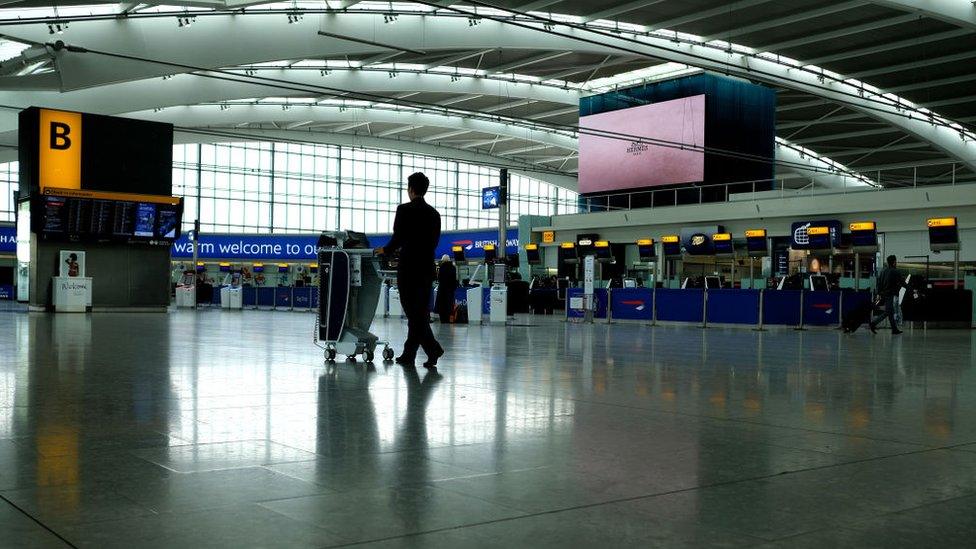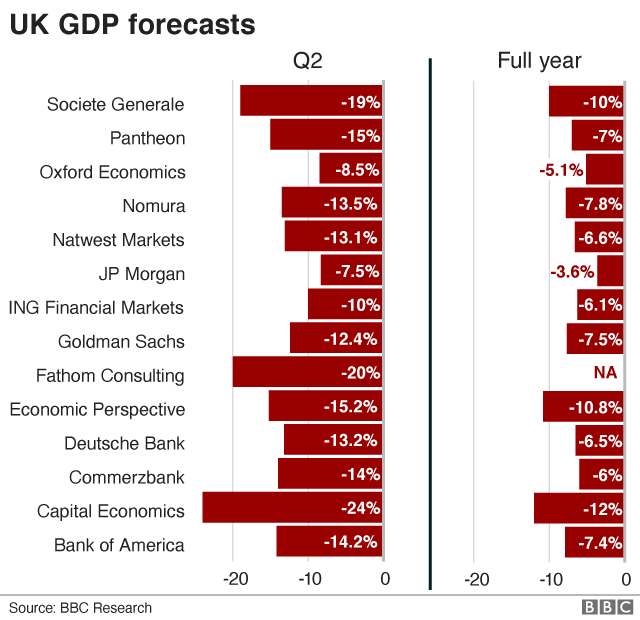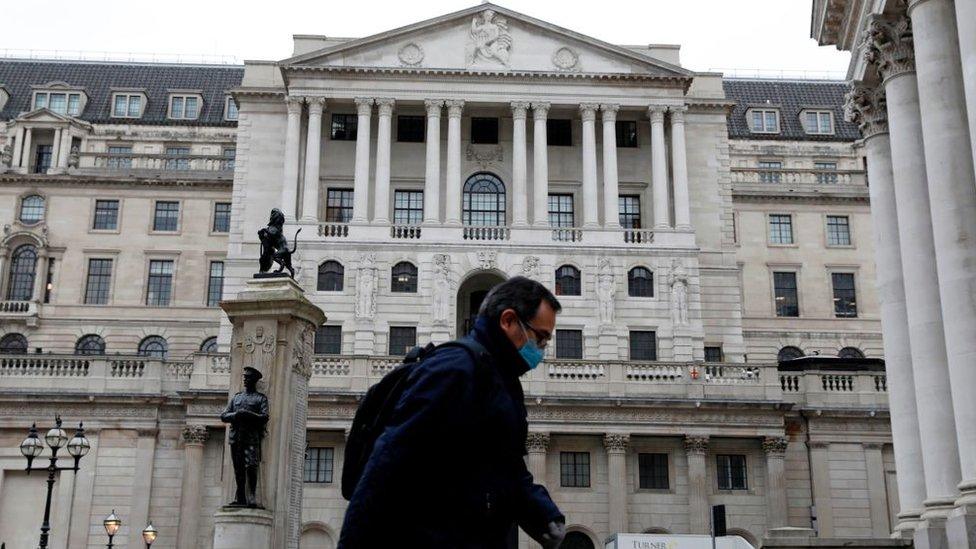Record fall in UK economy forecast
- Published

The UK economy is forecast to fall an incredible amount in the current pandemic-afflicted quarter ending in June.
The forecast comes from the projections of more than a dozen top economists, who are surveyed every month by the Treasury, and were contacted by the BBC.
While the same economists predict a similarly large positive rebound after that, this year, annual UK GDP is still anticipated to fall significantly.
While there is no precedent for shutdowns of large swathes of the economy, 14 of the top economists from the City and business have calculated how much economic activity is being lost.
The estimates have an average of -14%. However they range from JP Morgan's calculation that UK GDP in the April-June quarter will come in at -7.5% - a sharp contraction - to Capital Economics' forecast of -24% - suggesting nearly a quarter of entire economic activity will be lost.
Half the forecasts seen by the BBC are between -13% and -15%. Quarterly figures normally move by fractions of a percent.
For reference, just a few weeks ago, before the pandemic hit the UK, the average forecast for this quarter was a fall of just 0.2%. The official Budget forecast a month ago, before the Coronavirus effects, pencilled in growth of 0.4%.
The BBC understands that analyses circulating in the Treasury are in line with the larger end of such declines. But the Office of Budget Responsibility (OBR) has not yet been asked to update projections from the time of the Budget a month ago.

One OBR member, Sir Charles Bean, has referred to it being "not implausible" that for as long as the lockdowns are in force, economic activity will be reduced "by somewhere between a quarter and a third", and that a three-month lockdown "would knock something like 6-8 percentage points off annual GDP".
Last week, the OECD group of leading economies said that the immediate hit to the UK economy would be worth 26% of the economy. But it did not put a timeframe on that.
The Bank of England is currently preparing new forecasts for its Monetary Policy Report, to be published early next month. Last month, Bank governor Andrew Bailey said he could not put a precise number on the likely GDP fall, as it depends on how Covid-19 evolves. But "every picture we look on at has a very sharp V on it", he said.

Bosses of businesses offering services, like barbers and hairdressers, say they have no idea when cash will start rolling in again
Such movements have no precedent within a single quarter. The closest comparison would be the sharp fall in the economy during the early 1920s depression, although that occurred over three economic quarters. A prolonged fall such as seen a century ago is not what forecasters are predicting right now.
These sorts of numbers are anticipated across the developed world, as most nations pursue forms of shutdown to control the spread of the virus and protect health systems from being overwhelmed.
The forecast declines illustrate the difficult balancing act for the government in deciding when and how to lift lockdowns, now not expected until May at the earliest.
They also illustrate the fundamental economic policy challenge that the Treasury and Bank of England are trying to manage - to try to help ensure that there is a sharp rebound from these huge hits, avoiding prolonged damage to the economy.
>
- Published9 April 2020

- Published9 April 2020

- Published9 April 2020
